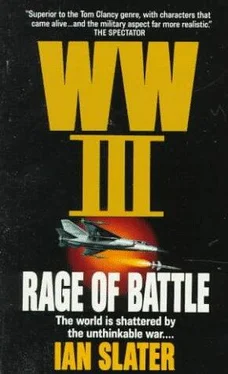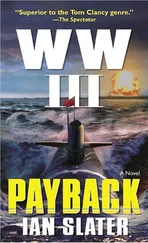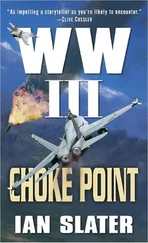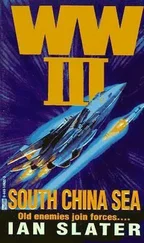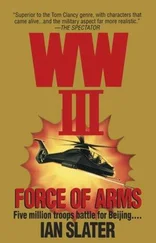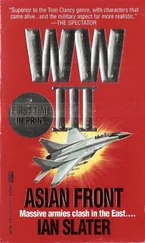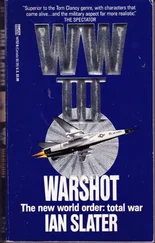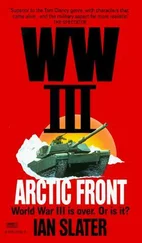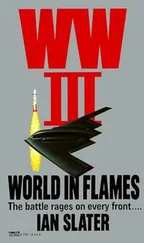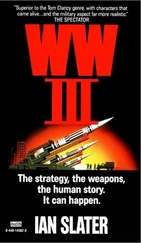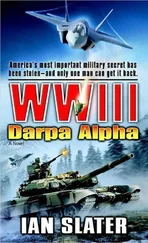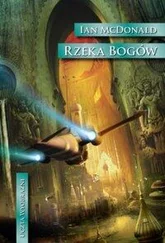Ian Slater - Rage of Battle
Здесь есть возможность читать онлайн «Ian Slater - Rage of Battle» весь текст электронной книги совершенно бесплатно (целиком полную версию без сокращений). В некоторых случаях можно слушать аудио, скачать через торрент в формате fb2 и присутствует краткое содержание. Год выпуска: 1991, ISBN: 1991, Издательство: Ballantine Books, Жанр: Триллер, на английском языке. Описание произведения, (предисловие) а так же отзывы посетителей доступны на портале библиотеки ЛибКат.
- Название:Rage of Battle
- Автор:
- Издательство:Ballantine Books
- Жанр:
- Год:1991
- ISBN:0-345-46514-8
- Рейтинг книги:3 / 5. Голосов: 1
-
Избранное:Добавить в избранное
- Отзывы:
-
Ваша оценка:
- 60
- 1
- 2
- 3
- 4
- 5
Rage of Battle: краткое содержание, описание и аннотация
Предлагаем к чтению аннотацию, описание, краткое содержание или предисловие (зависит от того, что написал сам автор книги «Rage of Battle»). Если вы не нашли необходимую информацию о книге — напишите в комментариях, мы постараемся отыскать её.
Rage of Battle — читать онлайн бесплатно полную книгу (весь текст) целиком
Ниже представлен текст книги, разбитый по страницам. Система сохранения места последней прочитанной страницы, позволяет с удобством читать онлайн бесплатно книгу «Rage of Battle», без необходимости каждый раз заново искать на чём Вы остановились. Поставьте закладку, и сможете в любой момент перейти на страницу, на которой закончили чтение.
Интервал:
Закладка:
But on the Yumashev, Captain Stasky could still pick up enough echo from the submarine’s bulk. If it was the American sub from Holy Loch, he knew that the whooshing sound of one of its 280-mile-range Tomahawk missiles, capable of being fired from the torpedo tube eighty feet beneath the surface, would alert not only the Yumashev but every Soviet Hunter/Killer south of the Greenland-Iceland-Norway Gap.
Also knowing the primary mission of the Sea Wolfs was to wait, to keep the United States’ last weapons platform intact should the Soviet ICBMs be unleashed, and that Roosevelt’s captain was engaged to be married, Stasky believed that it was all the more likely that the American somewhere beneath the Yumashev had deliberately held his fire. The American might also be confused by the new refit baffles welded on the Yumashev at the Tallinn Yards. Whatever the reason, the fact was that the American had held his fire, and Stasky believed that despite the chrezmerny zvuk machiny— “override clutter”—the Yumashev was getting from its own sonar echoes in the shallower water, the sub that his cruiser had picked up earlier must be in the near vicinity.
“Gotontes! Vesti ogon gruppoy RBU!”—” Roll drums! Fire RBU! All clusters!”
“Drums rolling,” confirmed the first mate, who then flipped up the Perspex protector, pushing the fire button for both twelve-barrel rocket launchers on either side of the stern helicopter hangar and the other two twelve-barrel launchers in the foc’s’le. From the starboard wing, the cruiser’s third mate and a midshipman, collars buffeted by the cold wind, watched the oil-drum-sized depth charges plopping unceremoniously over the stern, quickly disappearing in the ship’s boiling wake, the scream of the first salvo of antisub rockets filling the air, along with the thudding noise from gray bunches of mallet-shaped depth charges fired high in a scatter pattern, leaping into the air like grotesque quail.
The officer of the deck, already having started the clock, was counting, “One, two, three—” the drums timed to go off at greater depths than the RBUs. Stasky saw the first blip on the screen, the sonar alarm Dipping frantically like a smoke detector. “Torpeda v nashem napravlenii! Napravo!”— “Homing torpedoes! Hard right!”
The Yumashev heeled to starboard, discharging a cascade of khlam— “chaff,” aluminum strips and wafers designed to addle American torpedo sensors. As the RBU rockets were influence-fused, for magnetic signature, the Yumashev’s skipper knew the chaff might prematurely trigger them, but the old-fashioned drum charges set only for depth might still do the trick, though with the Americans’ titanium-reinforced hull, a drum charge would have to strike the hull itself to implode the sub.
“Dive — two thousand!” ordered Brentwood. It meant approaching crush point, but the stern planesman to his left didn’t hesitate and there was the surge of water pouring into the tanks. During the “hard,” steep-angled dive, Brentwood braced himself against the girth rail that ran around the raised periscope island as to his right the bow planesman watched depth gauge and trim as the Roosevelt, already having fired four Mk-48s, sank like a stone, nose first.
Six… seven… eight seconds, and aboard the Yumashev, Stasky knew something had gone wrong. The sea astern, off his port quarter, should be erupting in towering greenish-white mushrooms streaked with black oil from the sub’s raptured hydraulic systems. Instead the Yumashev’s captain looked out on a sea that was exploding only here and there. He estimated that less titan twenty percent of the RBUs and depth charges were detonating.
“Bozhe moy, Mendev!”— ”My God, Mendev!” he said, turning to his first mate. “Chto zhe tut takogo?”— “What’s wrong?”
On Roosevelt, the depth gauge’s needle was passing the two-thousand-feet mark and quivering. There was a hiss, then a jet of water — thinner than a needle. Coming in at over a thousand psi, it created a stinging aerosol, a “car wash” mist in the control room, temporarily blinding the planesman and the chief petty officer watching the ballast tank monitors. In six seconds the Roosevelt had reached twenty-one hundred feet. There was a dull thump, then another, the sound punching Brentwood so hard in the stomach, he could tell the depth charge was even closer than the sound indicated. The sub leveled out at twenty-three fifty, its pressure hull starting to groan. Three minutes passed and nothing. Then another explosion so close that it threw him back against the periscope rail, the Roosevelt shuddering so violently it blurred the red-eyed squares of the monitors, more jets of water shooting into the control room, creating an even denser aerosol.
“Up angle!” shouted Zeldman.
In the forward torpedo room, rivets began popping, one ricocheting about the titanium casing until it lodged in a crewman’s brain, splattering the pinkish-gray mass over the bulkhead, another smashing a Perspex fire button protector, sending off a torpedo. The torpedo was not yet armed, but its impact inside the tube was like that of a bullet in a closed barrel, its flame-burst concussing several crewmen in the torpedo room. The fire in the tube quickly died through lack of oxygen, but not before the meticulously tooled lining of the tube had been badly scoured. The first torpedo that Roosevelt had fired from the forward section and the two fired from the stern had gone haywire, heading into the fallen “chaff,” but these torpedoes’ premature explosion sent shrapnel whistling high into the air, inadvertently clearing a path for the lone stern-fired Mark-48 that was still running. It glanced the Yumashev’s starboard bow beneath the water-line — not enough to sink her, but the shock wave of methane and carbon dioxide from the explosive gases was enough to buckle the cruiser’s outer plating, imploding it with an elliptical gash twelve feet long and three feet wide.
The Russians were quick to the pumps, however, and with watertight compartments sealed, the cruiser was able to limp away at five knots, her two twin Goblet antiaircraft missiles, which could also be used in an antiship role, intact as well as her Kamov-26 over-the-horizon missile-targeting helicopter. The Kamov was already airborne, its contra-rotating rotors catching afternoon sunlight, its bug-eyed face, remarkably like that of a blowfly, hovering off the ship’s port quarter, its chin-mounted Bulge-B surface-search radar already scanning the horizon for any NATO ships that might be diverted to the area by the British commander of the western approaches. The helicopter’s radar and its height allowed it to pick up hostile targets well beyond the seventy-nautical-mile limit of the Yumashev’s head net-C air search radar.
The Allied ships the Yumashev expected didn’t materialize, most of them within steaming distance committed to the vital convoy duty farther south, where the Gulf Stream curves into the North Atlantic drift. But Allied aircraft did come, the Russian sub chaser detected by another sub chaser, a Dassault-Breguet Atlantic-2 patrol aircraft, which, too slow, low on fuel, and not equipped to attack the seven-thousand-ton cruiser, relayed the information to St. Mawgan, the USAF communication center in Cornwall.
Within five minutes, south of St. Mawgan, in the lush and windswept countryside, the orange jet of flame from a Sepecat Jaguar could be seen as the aircraft taxied out of its hardened “splashed-greens” camouflaged shelter onto a short stretch of highway, the blacktop marked off by detour signs. The plane’s high wing would enable it to take off from half the tarmac length usually used in its close support and reconnaissance role. Normally a light-strike aircraft kept for coastal defenses and photographic overflights of the battlefields across the Channel, the Franco-British jet had been scrambled because RAF fighter squadrons were in the process of intercepting large incoming Soviet formations over the North Sea. The Jaguar, its dark green-gray shape fleetingly veiled in fog, began its short run, the two eight-thousand-pound Adour turbofans, on afterburner, thrust into the mottled sky over England’s Land’s End, taking it to Mach 1.1 in less than a minute. The pilot, Roger Fernshaw, kept the plane low, where its small wing and fly-by-wire touch controls enabled the Jaguar to skim over the ruffled, cobalt-colored sea without emitting telltale radar signals, its FIN digital inertial navigation and weapon aiming system going through its paces, Fernshaw checking his HUD or head-up display and the Ferranti laser range and marked-target seeker. The late sun glinted momentarily off the metallic sea as Fernshaw punched in the coordinates for the Yumashev’s last reported position as relayed via St. Mawgan by the Dassault-Breguet patrol aircraft.
Читать дальшеИнтервал:
Закладка:
Похожие книги на «Rage of Battle»
Представляем Вашему вниманию похожие книги на «Rage of Battle» списком для выбора. Мы отобрали схожую по названию и смыслу литературу в надежде предоставить читателям больше вариантов отыскать новые, интересные, ещё непрочитанные произведения.
Обсуждение, отзывы о книге «Rage of Battle» и просто собственные мнения читателей. Оставьте ваши комментарии, напишите, что Вы думаете о произведении, его смысле или главных героях. Укажите что конкретно понравилось, а что нет, и почему Вы так считаете.
